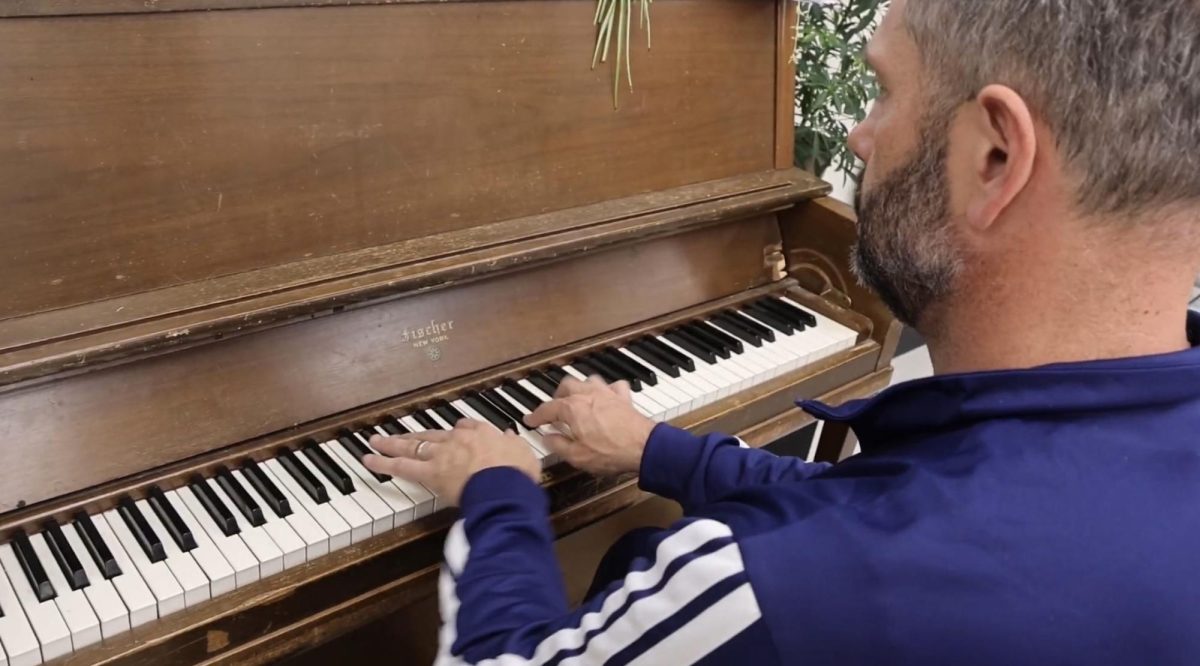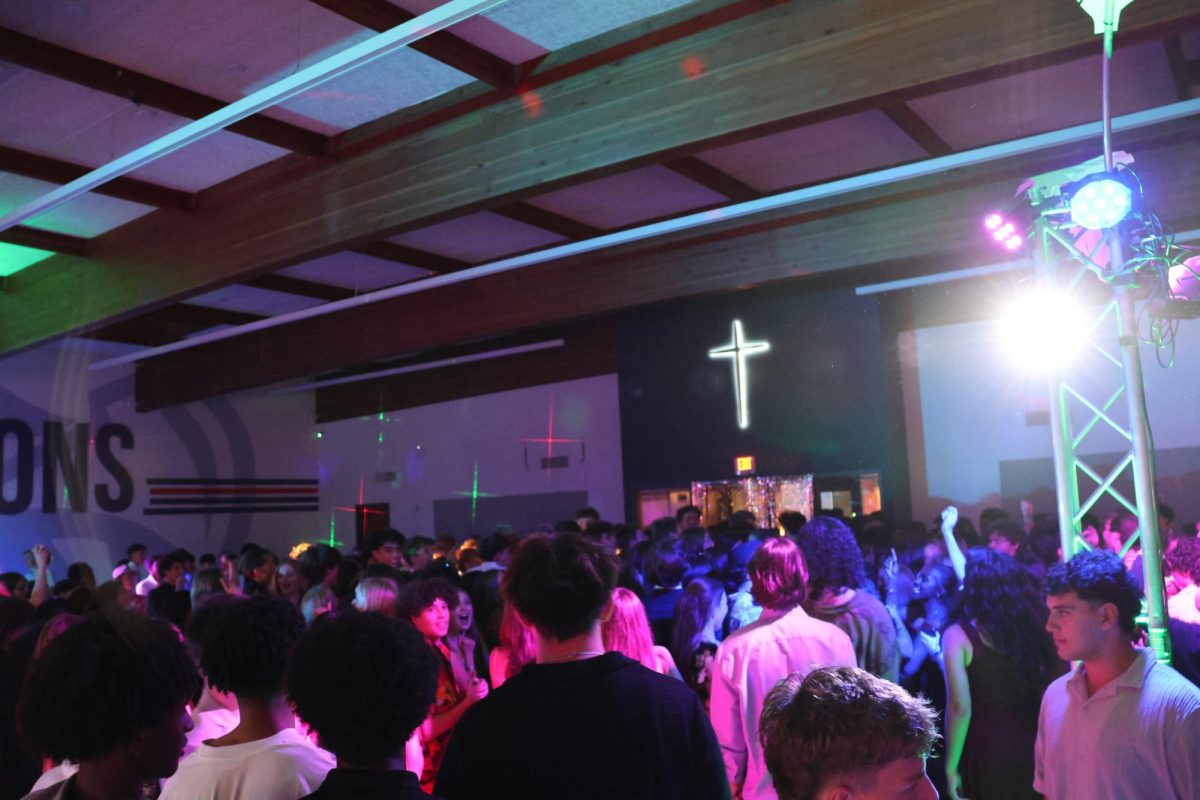Sign-in sheets for a variety of students. Emails, online forms, and voicemails from parents. Marked requests and early releases. This is what a normal day looks like for Attendance Officer Ms. Jill Beck. With the help of the Main Office Administrative Assistant Sarah Robles ’93, the two of them combat the average of 60 to 80 students who come in late every day for a wide range of reasons.
Every day, Ms. Beck sees the people who come in and observes that absenteeism and tardiness fluctuate around April to May, but this year, with the impact of the unexpected ice storm and the altered finals schedule, she said that the absences started to peak sooner than normal.
Senioritis, illness, struggles with mental health, sports — this is only a portion of the commonalities that contribute to student absences within schools. Public schools across the country reported an increase — from 15 percent to 26 percent — in chronic absenteeism since before the pandemic started, whether it was as a result of the sweeping societal shift or a change in what school meant for students. Schools around the U.S. questioned what could be done to encourage students to come to school, despite the lack of motivation to do so.
“It changed how we operate,” said Dean of Students Ms. Kenzie D’Ambrosio, noting that more work needs to be done in order to return to a sense of “pre-pandemic normalcy.”
On Tuesday, April 30, Ms. Beck counted a total of 87 late slips, all of which were signed by herself and Ms. Robles. 87 different students out of the 658 students that make up the school were late, meaning that 13.22% of the entire student body was either tardy in the morning or arrived later in the day.
“It’s not just one person being a few minutes late. It’s a collective amount of students,” Ms. Beck said.
Conversely, if a student is late and does not obtain a pass, then a “domino effect” falls from the teacher all the way back to the front office through an exchange of emails that the two of them have to go back and forth on to figure out if the student is actually there. The student is supposedly present after arriving late and missing a certain amount of classes, but on Ms. Beck’s side, it looks as though they’re absent. “It just makes more work trying to figure out is the student actually here? Did they make it, or are they actually absent?” she said.
But what exactly counts as an excused versus an unexcused absence?
According to the 2023-2024 Student Handbook — last revised in September of 2023 — only the following are valid reasons to be excused:
- Student illness
- Illness in family
- Dental or medical appointments that cannot be scheduled outside the school day
- Marriages or funerals
- School-sponsored activities including athletics, field trips, immersions and retreats. Students are responsible for tests and assignments missed during absences.
- School required quarantines for infectious illness
Meanwhile, the absences which are considered unexcused are as follows:
- Failure to notify school of an absence
- Leaving school without permission
- Skipping
- Oversleeping and missing class
- Being on school grounds but not in class without the permission of a teacher
- Missing school to finish homework/assignments/projects/activities for another class
- Completing out of school service hour requirements during the school day
- Staying up late the previous night
- Returning home late from a school sponsored event the previous night
- Attending athletic events as a fan without prior school approval
Ms. D’Ambrosio said that La Salle is “a safe place to be tardy” because of the limited repercussions in the event that a student is late or absent. However, this does not accurately reflect the reality for life beyond high school, so part of the job is helping to prepare students for a transition to the space that comes next.
While the handbook outlines procedures for unexcused absences and tardiness, such as campus beautification or reduced credit for homework or a quiz that is due the day they are absent, “there’s a lot of gray area because every student’s situation is different,” she said. Therefore, initiating blanket policies would not account for everyone’s experiences.
But there are differing feelings on the necessity of regulation. “We do need to be stricter with our attendance policies because after a certain amount of times of being tardy and no consequences, then [the students] don’t take it as seriously,” Ms. Beck said.
Senior Vicki Poletiek is someone who tends to miss a lot of school for medical reasons. She said that the concern over absences should be less than what it is now, and that “it shouldn’t really matter as long as you’re passing,” she said.
For French teacher Ms. Amanda Barker, she noted how students at her old school were more cautious of being tardy because a certain amount of them led to detention. But, punishment — when taking the significance of compassion as a school value into consideration — is not the end goal.
“I don’t want it to be punitive because missing school is already hard enough,” Vice Principal for Academics Ms. Kathleen Coughran said.
One of the difficulties was described as a “feedback loop” by Social Studies teacher Mr. Peter Snow, where a self-sustaining cycle begins when a student misses a lot of school, causing them to feel anxious. As a result of that feeling, they become overwhelmed to the point that they don’t want to go back to school, renewing the cycle of anxiety.
Junior Kennedy Harris, who is not often absent except for sports-related reasons, observed the challenge of being gone for multiple days in a row. “It’s hard for you to get back into it,” she said. “Then, when you’re trying to get back into it, you don’t want to be here.”
By missing a large sum of school, the academic experience is no longer the same as it once was. “When you miss a third of all of the classes in a semester, there’s no way for you to have the same level of learning,” Mr. Snow said. “It’s a different educational experience than what was explained to people when they were encouraged to come.”
But it doesn’t affect the student’s academic life alone. The way they choose to navigate absenteeism also affects the people around them, including administrators, friends, and teachers.
Ms. Beck stressed the value of honesty, mentioning instances where either the parent or the student wasn’t being truthful about the reason behind their absence. She recognizes that students — or parents with good intentions and wanting their child’s transcripts to reflect well on their time in high school — often want to protect their privacy, but that doesn’t entirely justify being dishonest.
“Maybe it feels like you’re not lying to a person,” she said. “But I am a person on the other side of it, even if it comes through an email or a message.”
Something she thought would be helpful was if documentation for appointments were provided in order to verify the excused absence, rather than it being used defensively.
For her, finding a balance between compassion and regulation is a complicated matter, especially when compassion can get “taken advantage of” and the lack of consequences leads to fewer people taking tardies and absences seriously.
Ms. Beck has seen the way it impacts the broader school community. She notes that when students think about themselves alone, they don’t see the whole picture.
“We at La Salle are all about relationships,” Ms. Coughran said, noting the importance for students to be in class while learning, being face to face with the teacher, and utilizing the material in person. These interconnected relationships were already difficult to foster through a screen that only simulated the genuine school experience behind it during the pandemic.
For some students, they may find an important element of education being the community around them, not the engagement of a screen.
“There are people that really learn and internalize information through conversation,” Mr. Snow said.
Additionally, he pointed out the difficulty of forming relationships between students and teachers if the student is simply not present for a long period of time.
The school provides several ways to find support after absences, such as through the counseling team, Academic Support Specialist Ms. Shannon Woodworth, or teachers in general, but in order to gain that support, it has to start with a conversation. “It’s kind of twofold — we need the adult support, and then we need the student buy-in,” Ms. D’Ambrosio said.
Students have to ensure their communication with teachers before and after their absences, while faculty works “to support those students and figure out what they need to make their transition back to school as seamless as possible,” she said.
Concerning longer vacations from school, Ms. Barker suggested that the students’ parents should be involved in these conversations. If parents had a complete understanding of both their child’s and the school’s perspectives regarding the effects of absences, it could prevent or alleviate the academic stress on their child before they choose to excuse them.
Except there is another factor that plays into these relationships between students and staff: accountability.
“We have a lot of students to keep track of, and we want to help those students that are behind,” Ms. Barker said. “But we can only give so much help before the student just has to take accountability for themselves.”
One standard procedure for students regarding pre-planned absences that they handle independently are purple sheets they have teachers fill out if students know they’ll be absent for two days or more, where teachers will put down the assignments they’re missing at that time.
However, because that sheet gets turned into the office before they leave, the student won’t have the physical copy of what they’re supposed to do when they come back.
“We’re questioning the effectiveness of the purple form,” Ms. Coughran said.
The sheet itself, current policies, and the statistics regarding absences will be reviewed over the summer by Ms. D’Ambrosio and Ms. Coughran. The two of them will reflect on structural changes and cultural shifts for the upcoming school year as well as what can be done to better achieve success for students while encouraging their independence.







![Mr. Owen Furlong, the temporary Campus Safety Monitor, grew up near La Salle and described how Christ the King was “basically [his] backyard for a long time.”](https://lasallefalconer.com/wp-content/uploads/2025/10/115A2328-1200x800.jpeg)
